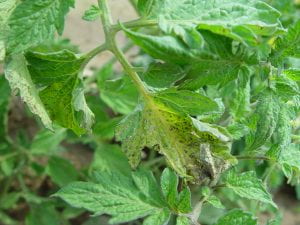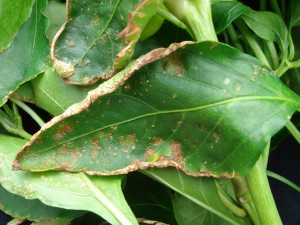
Gardening
Bumblebee Short Course for Community Scientists
 Six free, weekly webinars will focus on bumblebee biodiversity, ecology, and conservation. All sessions are on Fridays from 1 PM (Eastern Time) to 2:30 PM (Eastern Time) from March 18th to April 22nd.
Six free, weekly webinars will focus on bumblebee biodiversity, ecology, and conservation. All sessions are on Fridays from 1 PM (Eastern Time) to 2:30 PM (Eastern Time) from March 18th to April 22nd.
Register here. (http://go.osu.edu/bumble)
Our course webpage with resources and recordings: https://u.osu.edu/thebumblebeeshortcourse/
- March 18 — Bumble Bee Biology, Part 1, Jamie Strange: The Ohio State University
- March 25 — Bumble Bee Biology, Part 2, Jamie Strange: The Ohio State University, A Brief Overview of Federally Endangered Bumble Bees, Tamara Smith: U.S. Fish and Wildlife Service
- April 1 — Bumble Bee Identification (note dual offerings and a later start for Western ID), Attend one or both sessions, Bumble Bees from Eastern or Western North America,
- 1:00 – 2:30 EDT Identification of Bumble Bees from Eastern North America, Karen Goodell: The Ohio State University
- 3:00 – 4:30 EDT Identification of Bumble Bees from Western North America, Lincoln Best: Oregon State University
- April 8 — Bumble Bee Botany, Randy Mitchell: The University of Akron
- April 15 — Threats and Opportunities for Conservation, Hollis Woodard: University of California, Riverside
- April 22 — You Can Make a Difference for Bumble Bees: Programs to Document Bumble Bees in Yards, Parks, Gardens, and Natural Areas AND What Plants They Use, Sam Droege: Native Bee Inventory and Monitoring Lab, USGS, Jenan El-Hifnawi: USGS Bumble Bee Survey Coordinator
Sponsored by The Ohio State University Department of Entomology. This series is funded in part by a USDA/NIFA Integrated Pest Management Pollinator Health grant. Coordinated by Denise Ellsworth, OSU Department of Entomology All sessions will be recorded and posted on our course website and on YouTube http://go.osu.edu/bumbles
Hope you can join us this month to learn about our flying teddy bears!
20th Annual Master Gardener Plant Sale held on Friday, May 14 and Saturday, May 15
 Plants, plants, and more plants will be available at the 2021 Paulding County Master Gardener Volunteer plant sale on Friday, May 14th, 2021, from 7:30 AM – 5:00 PM and Saturday, May 15th from 8:00 AM until 12:00 PM. The sale will take place at the Paulding County fairgrounds inside the Block Building at 503 Fairground Drive, Paulding, OH 45879. Continue reading
Plants, plants, and more plants will be available at the 2021 Paulding County Master Gardener Volunteer plant sale on Friday, May 14th, 2021, from 7:30 AM – 5:00 PM and Saturday, May 15th from 8:00 AM until 12:00 PM. The sale will take place at the Paulding County fairgrounds inside the Block Building at 503 Fairground Drive, Paulding, OH 45879. Continue reading
Basis Information to Start Making a Raised Bed Garden
It’s beginning to feel like spring. Great video from my counterpart in Franklin County, Tim McDermott. I am a huge fan of raised bed cultivation as it maximizes efficiency and cuts down on work. This is a quick view at less than three minutes to highlight the basics of constructing, site location, filling, and maintaining your own raised bed.
Great Idea for the Youth Gardener
 Today as I was cleaning up my email box, I found this great Jr. Master Gardener Project that may be an opportunity to make with your own kids or grandchildren. Here is the link to the article on string gardens https://jmgkids.us/simple-string-gardens/
Today as I was cleaning up my email box, I found this great Jr. Master Gardener Project that may be an opportunity to make with your own kids or grandchildren. Here is the link to the article on string gardens https://jmgkids.us/simple-string-gardens/
These little beauties are quick and easy to make if you do not mind a little mess! By making a series of these individual plants, they form the ‘String Gardens,’ inspired by the Japanese. Additionally, they are perfect to get your anxious hands working with plants to jump-start spring, as well as for areas that may not have space or an environment for outdoor plants.
Is the weather feeling a little like Spring?
Have a great week!
Sarah J. Noggle
Chow line: Fall a great time for apples, peaches, blueberries, in addition to pumpkins

I know that autumn means pumpkins will be available in abundance, but what other produce is in season in the fall?
You are correct: This is the time of year when you will start to see pumpkins, squash, and gourds—which are all part of the Cucurbitaceae family—for sale in grocery aisles, farmers markets, and farms.
But fall is also a good time to buy grapes, apples, watermelons, potatoes, berries, zucchini, yellow squash, and peaches, among many other seasonal fruits and vegetables. In fact, those are some of the commodities that many grocery stores are now starting to promote heavily at discounted prices in their grocery aisles, according to the Sept. 4 edition of the National Retail Report, a weekly roundup of advertised retail pricing information compiled by the U.S. Department of Agriculture.
As mentioned in a previous Chow Line, although improved technology and agricultural innovations mean that consumers can access fresh fruits and vegetables year-round, fruits and vegetables naturally grow in cycles and ripen during a certain season. When ripe, produce is fresher and typically has its best taste. Seasonal fruits and vegetables are also typically cheaper to purchase because they are easier to produce than fruits and vegetables that are grown out of season. Continue reading
OSU Extension of Paulding County – We have an App for that
See what we just launched! Over the past few months, Michael and I have been working with a company to get all of our Paulding County OSU Extension information in one place. Thanks to the great sponsorship from Haviland Drainage Product and Haviland Plastic Products. This app will include Ag, Master Gardener, and 4-H News. As our new position for Family and Consumer Sciences is added in 2021, there will content relating to that program area. Search Paulding County Extension and you should find the app. In the app, it includes our blog posts, calendars, YouTube Page, Facebook information, Twitter, LinkedIn and so much more. You can upload horticulture questions for our Master Gardener Volunteer Hotline. This will also include registration forms and upcoming events. Don’t miss out on this valuable information for Paulding County.
-
Paulding County OSU Extension is now in the iOS and Google Play App Stores or at http://www.grandstandsites.com/gs?c=Paulding_County_OSU_Extension
Bacterial Canker Showing Up in Tomatoes this Summer

Bacterial canker is a systemic disease of tomatoes caused by the bacterium Clavibacter michiganensis subsp. michiganensis. It can occur in fresh market and processing tomatoes, in open fields, and in protected culture systems like greenhouses and high tunnels. Symptoms are stunting of whole plants, which never reach their full potential, plant death, foliar lesions, “firing” on leaf margins, and raised scabby lesions on fruit. Seeds are a major means of introducing the canker pathogen into a tomato crop, but the bacteria can survive in the field for several years, as well as on surfaces such as greenhouse walls or floors, tools, stakes, clips or ties, etc. Several cases of tomato canker have come into our diagnostic lab this summer; since the bacteria clog the plants’ water-conducting vessels, the stunting symptom may be more severe in the hot, dry weather we’ve experienced for much of this year’s growing season.

Peppers are also susceptible to bacterial canker, but the disease is not systemic in peppers so the stunting symptom does not occur. However, the firing of the leaf margins and leaf and fruit lesions do occur. Symptoms of bacterial canker on peppers are different than those on tomatoes (see figures). The bacteria that infect
Start with clean seed – For purchased seeds, buy certified, disease-free seed or sanitize seed with hot water (recommended), dilute bleach, or hydrochloric acid. It is especially important to sanitize saved seeds, such as for heirloom varieties. Here is a link to the OSU fact sheet for Hot Water and Chlorine Treatment of Vegetable Seeds to Eradicate Bacterial Plant Pathogens. In place of water baths for the hot water treatment, relatively inexpensive Sous Vide – type digital water heaters can be used to heat and maintain the water at the prescribed temperature. There are no bactericides or other products that control this disease once it is in the field or greenhouse. This disease is managed primarily through sanitation.

- Keep transplants clean and healthy – Scout tomato and pepper plants daily and destroy plants with canker symptoms once a plant disease diagnostic laboratory has confirmed the disease. Apply one or two preventative copper fungicide applications and one application of streptomycin (conventional systems) to the plants before transplanting them into the field.
- Use clean equipment and tools – Clean and disinfect all tools and farm equipment prior to working with the transplants or plants. Good sanitation practices are critical to prevent contamination and cross-contamination of plants by the bacterial canker pathogen. Quaternary ammonium products and 10% chlorine bleach are suitable disinfectants.
- Start with a clean field – The bacterial canker pathogen can survive in the field as long as there is infected crop debris present. Rotate with a non-host before re-planting the field with a tomato. Ideally, a 3-4 year out of crops in the same family as tomato (pepper, eggplant) should be implemented. Plant into a field free of weeds or volunteer tomato plants.
- Use best cultural practices – Use management strategies that maintain reduced-stress growing conditions. Provide plants with adequate but not excessive nitrogen, improve the organic matter content of the soil through the use of composted green or animal waste or cover crops, use well-drained soil and avoid overhead irrigation if possible.
The Annual Pumpkin Field Day Goes Virtual!
 For over 20 years the pumpkin field day held at the Western Ag Research Station in South Charleston has hosted growers from around the state giving them a wide array of production and pest management research, demonstration, tips, and tricks. Instead of driving over to the research station, participate virtually from your home, business, or favorite coffee house/brewery!
For over 20 years the pumpkin field day held at the Western Ag Research Station in South Charleston has hosted growers from around the state giving them a wide array of production and pest management research, demonstration, tips, and tricks. Instead of driving over to the research station, participate virtually from your home, business, or favorite coffee house/brewery!
Because of the Covid-19 pandemic, we won’t be able to hold a field day in person this year, but we are working hard to bring you the results of several demonstrations and research projects via a pre-recorded video stream that will air on the OSU IPM YouTube channel on August 27 at 6 PM.
Registration for the virtual event will be necessary so we can send out the viewing links between August 26-27 for the roughly hour-long field day. Please register at the link below by the deadline of August 25 at 8 PM. Continue reading
Welcome to the Paulding County Master Gardener Program
Welcome to the blogsite for the Paulding County Master Gardener Volunteer Program. I am excited to share with you Horticulture, Natural Resources, and Master Gardener Volunteer news and events from around the area, region, and state. Additionally, this blog site holds the tab for our Master Gardener Volunteer hotline to answer your local gardening, tree, pond, horticulture, flower, and insect questions. We will try our best to answer local and state questions. Finally, this blogsite will feature area events based on gardening and horticulture. Please email noggle.17@osu.edu for any questions.
Welcome to our World – Sarah Noggle, Extension Educator, Agriculture, and Natural Resources



